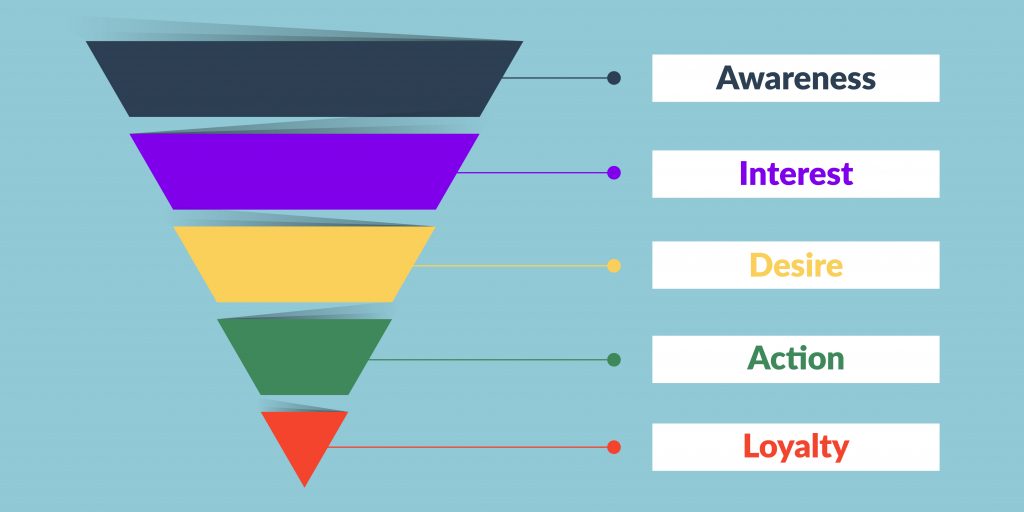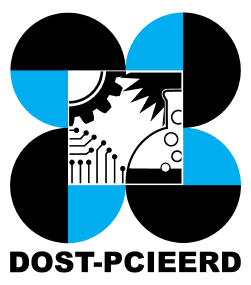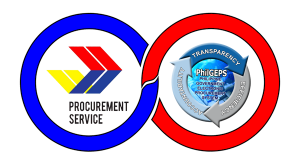
The complexities of digital marketing success requires more than just strategies- it also demands an understanding of the process and tool known as the Marketing Funnel. As businesses strive for excellence in their marketing endeavors, the use of a Marketing Funnel in your marketing strategy is an essential tool to efficiently drive curious customers into sales. Within the scope of marketing funnels, we’ll delve into the 5 stages of a marketing funnel, examples, and relevance. So, fasten your seatbelts as we tackle and unravel the strategic significance of establishing a marketing funnel.
What is a Marketing Funnel
A Marketing Funnel is a strategic framework that outlines the stages a potential customer goes through from the initial awareness of a product or service to the end goal of conversion or sales.
Imagine the Marketing Funnel as a real, tangible funnel guiding individuals through a journey. Just like a funnel channels liquid smoothly from a wide opening to a narrow exit, the Marketing Funnel pinpoints potential customers through a series of steps.
Its purpose? The purpose of a marketing funnel is to systematically build interest, engagement, and trust, all with the end goal of leading potential customers to take the desired action—whether it’s making a purchase, signing up, or any other conversion you’re aiming for.
So, visualize this funnel-shaped pathway as a roadmap for your audience, helping them progress from the broad awareness stage to the more focused and intentional conversion phase. It’s not just a concept; it’s a hands-on tool to shaping customer experiences and steering them toward meaningful interactions with your brand.
Why Do Businesses use a Marketing Funnel
Using a marketing funnel is a structured framework with the end goal of driving sales from your campaigns.
Lead Generation
At the very top of the funnel, the goal is to generate leads by attracting potential customers. Typically, lead generation should pique the interest of your audience, at this stage, your campaign should focus on offering your products, services, or solution to potential customers, eventually transforming a lead into a conversion.
Lead generation is usually done through various marketing channels such as content marketing, social media marketing, SEO, Google ads, and more. Lead generation is the stage where you want potential customers that have an interest in your product or service to click through your landing page or whatever channel you’re using to further them down to your marketing funnel.
Conversion
Once you’ve brought your leads to the spiral of your marketing funnel, conversion is the next step. Businesses now shift their focus into converting their leads into prospects. Typically, this is where their sales team comes into play and tries to communicate and build relationships with leads. At this stage, the sales team tries to understand the pain points of their prospect, and then delivers specialized solutions to convert their prospects into sales.
Sales
As you already know, the end goal of the marketing funnel is to drive sales from your campaigns. At this stage, your team focuses its shift to converting prospects into paying customers. This stage usually involves offering compelling promotions, limited-time offers, and product benefits that aids the pain-points of the prospect.
What are the 5 stages of the Marketing Funnel
Some say there are only 4 or 6 stages of a marketing funnel, but we will discuss the 5 stages of a marketing funnel, which are:
Awareness
If you’re starting a brand or a business, chances are, people don’t know who you are and what your products and services are. For startups and new businesses, the awareness stage is the most important stage in the marketing funnel.
The awareness stage is where potential customers become aware of your brand, product, or service. They may come across your brand through various channels such as social media ads, Google, or word-of-mouth marketing.
The goal in the awareness stage is to capture the attention of your target audience and make them aware of what your brand has to offer. Highlight your USPs (unique selling points) and your value proposition so potential customers can capture what you can offer to their pain points.
Example of the Awareness Stage:
- Shoppable Business, a B2B eCommerce procurement marketplace launches a targeted advertising campaign on Facebook, Instagram, Google, and LinkedIn, showcasing its features and benefits of their platforms to potential customers and business partners.
- The ad features eye-catching and compelling copy to capture the attention of customers and businesses which includes business owners, procurement, and finance executives.
Interest and Evaluation
In the interest and evaluation stage, this is where potential paying customers show interest in your product, service, or solution. This is the part where potential customers might research about your offerings and how it can help them address their pain points.
Producing content, gathering customer reviews, and showcasing your product highlights can help develop leads and lead them deeper into your marketing funnel, ultimately converting your curious audience into paying customers.
Example of Interest and Evaluation Stage:
- Potential customers who click on the ad are directed to a landing page, a website, where users can browse through various product categories and procurement solutions.
- The landing page or website is optimized for user experiences such as high-speed page loads, eye-catching images, including exclusive offers or discounts. As they scroll through, they begin to wonder and evaluate how this can address their pain points.
Desire
The desire stage is where potential customers may have been enticed and developed a strong interest in your product, service, or solution, and desires to avail one. Potential customers may have identified with your brand’s benefits or features that can help address their pain points and are already considering availing your product.
Example of Desire Stage:
- Shoppable Business highlights promotions and offers such as a free startup plan for a year when you register.
- The more customers explore the landing page and discover the unique features and capabilities of their solutions they more likely become enticed to sign-up or avail the product if the offer and solutions suit their needs.
Action
After experiencing the desire to avail your product, the Action stage is where potential customers take the desired action in your marketing funnel such as making a purchase, signing up for a product demo or trial, or inquiring about your solutions.
At this stage, ensuring the buying process is smooth and frictionless to encourage conversions is paramount. An example would be creating a clear call-to-action promotion, easy-to-navigate landing page, and a 2-step checkout process that can easily drive the customer into taking the desired action.
Example of Action Stage:
- Users who are ready to avail the solution will sign up for the free startup plan.
- The sign up process is streamlined such as clear instructions and data required on the form.
- After completing the form, users receives an email with details about their free startup plan and a personalized thank-you message from the business
- The sales team would then contact the user to further explain and talk about their solutions.
Loyalty
The marketing funnel and your relationship with your paying customers doesn’t end after the transaction. At the loyalty stage, the focus shifts to building long-term loyalty. To retain customer retention, providing after-sales service, offering exclusive discounts, sending newsletters, and asking for customer feedback / reviews are a few ideas to nurture your relationship with your customers.
This strengthens your bond with customers and turns them into brand advocates who can potentially bring in more customers or become a repeat customer.
Example of Action Stage:
- After the conversion, Shoppable Business continues to further the relationship with business customers by providing after-sales customer service and communication with procurement such as purchase orders, customization, and sales invoice, until the customer orders again for procurement.
- Shoppable Business maintains regular communication with customers through email newsletters, social media updates, and personalized promotions, encouraging repeat procurement and fostering loyalty.
Marketing Funnel vs Sales Funnel
The marketing funnel and the sales funnel are closely related concepts that represent different stages of the customer journey, with the marketing funnel focusing on attracting and engaging potential customers, while the sales funnel emphasizes converting leads into paying customers.
The marketing funnel typically consists of stages such as awareness, interest, desire, action, and loyalty, where businesses use various marketing strategies and tactics to capture the attention of potential customers and nurture them through the buying process.
In contrast, the sales funnel focuses on stages such as prospecting, qualifying, presenting, and closing, where sales teams engage with leads, address their needs, and guide them towards making a purchase.
Is the Marketing Funnel Still Relevant?
Yes, a marketing funnel is still relevant whether it’s traditional or digital marketing.
A marketing funnel is more than just a marketing tool, but is a structured framework that helps marketers plan their marketing campaigns effectively.
The traditional linear marketing funnel has undoubtedly evolved to adapt to the complexities of modern customer behavior, digital marketing tools and channels. The core principles of a marketing funnel still serves as a guide for customers through the awareness stage to the loyalty stage of the customer journey that still remains essential in planning a marketing campaign.
By plotting the customer journey and tailoring marketing strategies to meet the specific needs of customers at each stage, businesses can improve engagement, conversion rates, and overall marketing performance in online channels.









